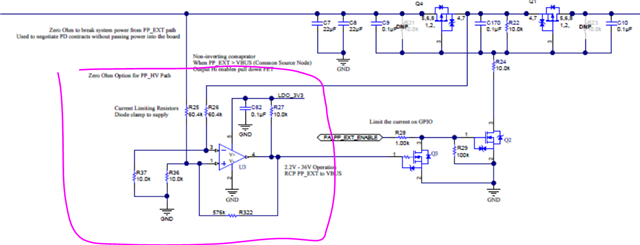Other Parts Discussed in Thread: TPS65987D, BQ25792, BQ24292I
Tool/software:
Hi there,
I’m currently working on a design that incorporates the TPS65988, and I’d like to confirm some capabilities regarding dual-role functionality.
Is it possible for both ports on the TPS65988 to support sink and source operation? Specifically:
-
I’d like to support scenarios where both ports are sourcing power simultaneously (e.g., Port 1 and Port 2 both providing 5V VBUS from a shared DC/DC supply). I am using the BQ25792, and have set up proper external NFETs to make sure that the charger doesn't receive both VBUS power. Looking at the schematic, there are already two PFETs on the TPS65987D VBUS side. I guess I can do away with these BQ25792 NFETs?
-
Alternatively, if Port 1 is connected to a 5V DC/DC supply (via PP_HV1) and Port 2 is connected to a battery charger IC (e.g., BQ25792) or vice versa, I’d like Port 2 to sink power and pass it to the BQ charger when needed while the other port sources, etc.
-
How can I configure the TPS65988 such that both ports are capable of sourcing or sinking power, is this easily done?
-
Are there any design caveats or best practices to consider, especially with regard to tying PP_HV1 and PP_HV2 and using in conjunction with BQ25792? Mainly I would like to avoid the use of 8 external FETs (4 NFETs on BQ side, 4 PFETs on TPS65988 side).
Thanks in advance for your help!
Best regards,
Ben



